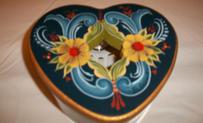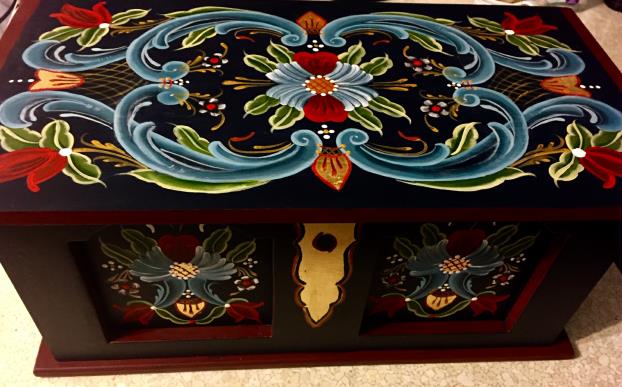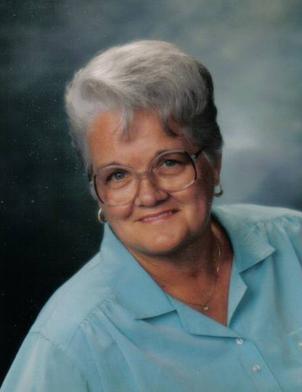About . . . . . .
Betty Dowe
I started rosemaling 43 years ago. I was suppose to go to a stained-glass class, but it was cancelled so with the support of my husband I joined the Rosemaling class. It was to only be for one semester then I was going to try something else, but Don suggested that I try it for a year because of the time and money invested in it. I agreed and I haven't put my brushes down since. Two years after that class I was teaching the Beginners class.
Within the first year I was painting ornaments for my four children, Debra; Marsha; Donn Jr. and Greg, that I still enjoy to paint today. Over the years many teachers have had a great impact on my Love for this Beautiful art. In the first eleven years I painted in oil then switched to acrylic due to allergies.
I have been very active with Vesterheim American / Norwegian Museum as an Editor for the Vesterheim Rosemaling Newsletter, helping create the first "Rosemaler's Recipe Cookbook" and have hadmany other publications such as "Norwegian Rosemaling in America" , "Vesterhhiem's Rosemaling Christmas Ornaments"< and "Rosemaling Coast to Coast" pattern books.
History of Rosemaling
Rosemaling is a 250-year-old Norweigian craft based on painted "C" and "S" curves combined to form both symmetrical and asymmetrical designs of stylized flowers. Before the availability of metal cooking utensils in Norway, rosemaled wood was sealed and used as tankards, cookware and food storage containers. Rosemaling literally means "rose painting".
Rosemaling developed in the mid-18th century when chimneys and glass windows were introduced to Norweigian homes. Until then, soot-covered walls defied decoration except for wood carvings, tapestries hung for festive occasions, and chalk designs drawn on beams and rafters.
When chimneys and windows cleaned up the interiors and Norwegian seamen began bringing back souvenirs from other countries, the craft's popularity grew.
It spread to the United States when Norwegian farmers migrated in large numbers to Illinois, Wisconsin, Iowa and Minnesota. In the '30s, Per Lysne, an artist-farmer of Stoughten, Wis., introduced the art to America by rosemaling stripes on wagons.
Types of Rosemaling
Four styles I paint: Rogaland, Telemark , Valdres and Hallingdal. These are only a few and are named after the region of Norway in which each originated. Norwegian seamen returning to Norway brought back ideas reflecting the art of Germany, the Netherlands and the Orient.
Telemark Rosemaling is lavish and asymmetrical, using fantasy flowers and rhythmic C- and S-shaped ornamentation. This decorative floral painting was influenced by the "rococo" style of ornate painting. Telemark style uses nuances within a color scale rather than bold contrasting colors.
The Rogaland tradition is similar to Telemark, but makes use of symmetrical flowers and leaves, and adds free hand ornamentation.Hallingdal Rosemaling is symmetrical, with the main feature being a central flower. Leaves and other flowers radiate from the center. Bright colors form a robust design. Cool blue and rich earth colors are also seen in Hallingdal style.
Valdres makes lavish use of the color gold. A distinguishing feature is the sharply pointed S-shaped leaves, executed with one skilled brush stroke. Another common feature is a stylized pine tree.
https://youtu.be/3NycM9lYdRI





